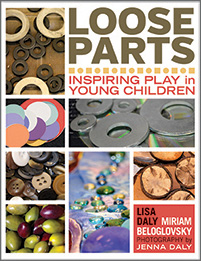ExchangeEveryDay Past Issues
 << Previous Issue
| View Past Issues | | Next Issue >>
<< Previous Issue
| View Past Issues | | Next Issue >> -Lao Tzu
"While boosting kids' math and verbal skills may draw more attention from parents and educators, spatial reasoning skills play an important — sometimes overlooked — role in academic and career success. And preschool, it turns out, is a key time to foster children's spatial cognition," observes Deborah Farmer Kris in KQED News. Kris describes four steps for fostering spatial reasoning skills:
- Use spatial language — Children who are exposed to more spatial language during their preschool years outperform their peers on spatial tests years later.
- Engage in simple mapping activities — Research suggests that children as young as 3 years old can appreciate the relationship between a map and the physical world.
- Invest in blocks and puzzles — Children who regularly play with blocks and jigsaw puzzles have more advanced block design scores than children who play with such toys less often.
- Read spatially challenging books — Look for books that include pictures from various angles or perspectives that contain maps and abundant spatial language.
Contributed by Kirsten Haugen
 Loose parts are natural or synthetic, found, bought, or upcycled materials — acorns, hardware, stones, aluminum foil, fabric scraps, for example — that children can move, manipulate, control, and change within their play. Loose parts are alluring and beautiful. They capture children's curiosity, give free reign to their imagination, and encourage creativity.
Loose parts are natural or synthetic, found, bought, or upcycled materials — acorns, hardware, stones, aluminum foil, fabric scraps, for example — that children can move, manipulate, control, and change within their play. Loose parts are alluring and beautiful. They capture children's curiosity, give free reign to their imagination, and encourage creativity.
With more than 550 color photographs of many kinds of loose parts in real early childhood settings, classroom stories, and a dynamic overview, this book provides inspiration and information about the ways loose parts support open-ended learning, enhance play, and empower children. With loose parts, the possibilities are endless.




Comments (1)
Displaying 1 CommentArea IV Park Place Learning Center
Monticello, Indiana, United States
Love the ideas, but it would be helpful for a few books to be listed
• Read spatially challenging books — Look for books that include pictures from various angles or perspectives that contain maps and abundant spatial language. Please list examples of these books
Post a Comment